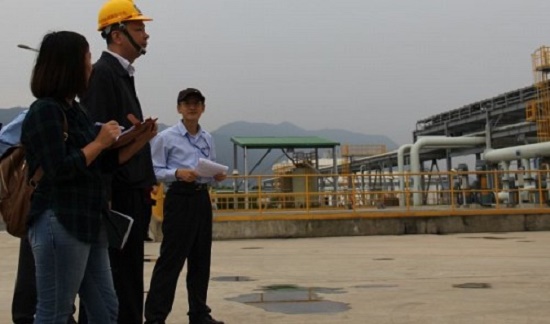Viet Nam to ask Formosa to change technology in wake of fish death scandal
Taiwan’s Formosa Plastics Group must replace the current technology at its Vietnamese steel making plant, which was responsible for killing dozens of metric tons of fish, Viet Nam’s science ministry said on Tuesday.
Viet Nam will closely oversee the technology change at the Formosa steel mill in Ha Tinh Province, which is also part of a five-point commitment the Taiwanese firm has made after its role in the environmental disaster was revealed last week.
“Under our supervision, Formosa will have to change some types of technology at their steel mill, in line with what their leaders had promised,” Deputy Minister of Science and Technology Pham Cong Tac said at a ministry press briefing in Ha Noi.
 |
| Deputy Minister of Science and Technology Pham Cong Tac |
The Vietnamese government announced on June 30 the results of a two-month inspection into the mass fish deaths observed between April and May along the coast of Ha Tinh and three other provinces, Quang Binh, Quang Tri and Thua Thien-Hue.
The investigation, with more than 100 scientists involved, found that untreated wastewater from the Ha Tinh steel plant of Formosa, containing such toxic substances as phenol, cyanide and ferric hydroxide, had been dumped into the ocean, leading to the fish deaths.
The Taiwanese admitted its wrongdoing and made five commitments, including apologizing to Viet Nam, paying US$500 million in damages, and improving its steelmaking technology.
 |
| People are pictured near the wastewater treatment area at the Formosa steel plant in Ha Tinh, located in north-central Viet Nam. (Photo: Tuoi Tre) |
Scientists have found that the direct cause of the fish deaths was wastewater resulting from a technology known as wet-quenching coke, in which the coke is sprayed with water for cooling, resulting in high CO2 emissions and thermal energy loss.
In steelmaking, coke is used as a fuel and as a reducing agent in smelting iron ore in a blast furnace.
The Formosa plant in Viet Nam currently deploys these pieces of technology.
It is suggested that Formosa switch to the dry-quenching coke method, in which coke is cooled using an inert gas, to avoid repeating its mistake.
(Source: Tuoitrenews)